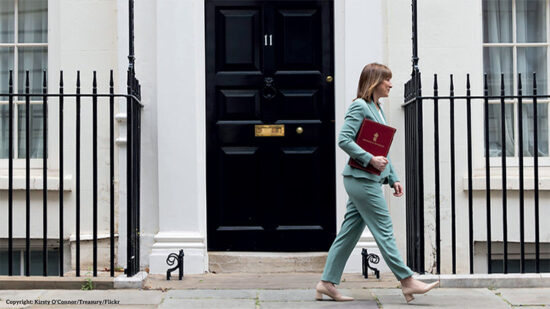Sterling
The Bank of England Quarterly Bulletin, released last Thursday, stated that “market sentiment appeared to improve in the second half of the review period. However, some contacts cautioned against placing too much weight on this, given the seasonal lull in some financial markets during July and August, and the fact that many of the fundamental challenges facing the euro area remained.” Clearly the central bank is very wary of signalling that the UK economy is emerging from the double-dip recession seen this year. Nonetheless, economic data does give hope of an improvement in the second half of this year, and with the ECB trying to convince investors that it means business in solving the Euro problems, there is room for optimism.
This week sees the Monetary Policy Committee minutes, and the markets should get some more ideas of the central bank’s thinking with regards further Quantitative Easing. Most economists feel that another £50bn of QE will be announced, with November the most likely time. However with the pick-up in economic activity, this may be in doubt. Sterling is currently benefiting from the move away from the US dollar, following the Federal Reserve’s launch of QE3.
The 2012 high of $1.6300 is the next major target, and we feel that this prove a big resistance level in the week ahead. Against the euro, further gradual falls may be seen while the feel good factor remains with the single currency – support is at €1.2350.
US dollar
The dollar was a big loser last week as investors dipped their toe into riskier currencies after the ECB action last week to support the embattled euro. The currency was also hurt by the likelihood of more quantitative easing in the build up to last Thursday’s Federal Reserve statement. The dollar hit 7 month lows against the Japanese Yen, and 4 month lows versus the pound and euro before pushing on from there as the Fed announced what is effectively unlimited quantitative easing.
The Fed will pump in $40bn dollars per month on an ongoing basis until there is an improvement in the jobs market, focusing their purchases on Mortgage Backed Securities (MBS) in an effort to assist the housing market. They also indicated that interest rates would remain at their current lows until 2015. There is a strong risk that the policy will prove inflationary and, as such, the dollar fell following the announcement, with many analysts suggesting the benefit to the US economy will be limited. One report suggested that a further $600 billion in asset purchases would only boost growth in 2013 by between less than 0.1 to no more than 0.4 percentage points.
This week’s manufacturing figures from the New York (Empire State) and Philadelphia Federal Reserve districts will provide the main interest as the markets try to determine the state of the US economy. The Fed decision will continue to dominate proceedings though and is likely to keep the dollar on the back foot. We expect GBP/USD to run into resistance at $1.6302 where it may struggle. EUR/USD has pushed on through $1.3000 and could have a few more cents to travel before gravity takes hold.
Euro
The main event last week as far as the euro was concerned was the ruling of the German Constitutional Court regarding the constitutionality of the European Stability Mechanism. In the event, markets breathed a sigh of relief as the court ruled that the European Stability Mechanism (ESM) and the EU’s Fiscal Compact are compatible with the country’s Basic Law. The one condition was that German liability be limited to 190 billion euros as agreed in the ESM treaty. This caused the euro to edge up even further against most currencies in the build up to the Federal Reserve’s meeting. The decision by the Fed to expand their QE programme saw investors flee the dollar in anticipation of inflation (and therefore depreciation of the currency) with the euro providing the next biggest source of liquidity. Such flows may continue into this week, although the current move feels like a correction rather than part of a lasting trend.
While the euro is riding the wave at the moment, there will still be plenty of potential obstacles to overcome. One of these was seen on Wednesday when the Greek Prime Minister Antonis Samaras received the second refusal in four days from coalition partners over plans to reduce spending that are key to receiving international aid. These plans have already been criticized by the IMF and ECB as not going far enough to rein in wages and pensions. There will doubtless be more knock backs, but for now the ECB has achieved its main objective, to make investors feel they are on top of the situation and are ready to act. Confidence is being restored slowly, but it would not take much for investors to run for cover again.
We feel the euro has a little further to run in the short term, some of the main challenges are past, and with the US looking to announce more QE, a move towards $1.3145 and possibly up to $1.3400 are now plausible. Against sterling, a similar story, with €1.2375 already being tested.
New Zealand Dollar
The kiwi dollar strengthened last week, largely thanks to the announcement of QE3 in the US and a general uptick in risk appetite following the ECB plan and reassuring words from China’s leadership. The main domestic news was the latest meeting of the Reserve Bank of New Zealand which signalled the current pause in interest rates at 2.5% may last through mid-2013 to help bolster the economy which has been buffeted by weaker global growth and currency strength. “New Zealand’s trading partner outlook remains weak,” Reserve Bank Governor Alan Bollard told reporters in Wellington after leaving the official cash rate at 2.5%. “We have got a forecast that short-term interest rates are going to stay roughly where they are for another year, so that’s quite a stable sort of outlook.” The decision was Bollard’s last in a 10-year tenure before he steps down later this month, succeeded by former World Bank co-managing director Graeme Wheeler.
While the central bank signalled little need to raise borrowing costs until the second half of 2013, economists are waiting to gauge Wheeler’s interpretation of conditions before agreeing. The decision was widely expected and had a limited impact on the currency, although the GBP/NZD rate fell around 1% following the news. A further sharp fall came last Thursday evening following the Federal Reserve announcement which boosted growth linked stocks and the commodity currencies.
Next support on GBP/NZD is at NZ$1.9284 and should be tested in the coming days. NZ$1.9151 is the next step on the way back to NZ$1.9000 but the rate should stop short of that level in the near term.
Australian Dollar
The Aussie dollar recouped much of the recently lost ground through the course of last week as risk appetite returned to the market, driven in no small part by the approval of the European Stability Mechanism by the German Constitutional Court and the Federal Reserve’s announcement of effectively unlimited quantitative easing in the US. This factor proved sufficient to reverse losses early in the week caused by unexpected declines in domestic home- loan approvals and China’s imports which damped the outlook for economic growth. Data released on Sunday evening showed industrial output rose by the least in three years in China, Australia’s biggest trading partner.
This negativity was compounded by domestic figures showing that the number of loans granted to build or buy houses and apartments in Australia declined 1% in July from June, when they increased a downwardly revised 1%, according to the statistics bureau. Other data showed business confidence declined in August, fanning speculation the Reserve Bank of Australia will resume interest-rate cuts to counter the impact of a global slowdown, although consumer sentiment improved.
Nothing much in the way of data this week, so risk appetite resulting from the Fed QE3 plan will dominate. Australia is more sensitive to China than the US, so gains may be limited. Support is at A$1.5265 and around the A$1.5000 level. The currency may struggle to get that far however.
Canadian Dollar
Canada’s dollar strengthened to a 13-month high versus its U.S. counterpart after the Federal Reserve announced a third round of stimulus measures to spur economic growth in the nation’s largest trading partner. The currency gained as the Fed said it will expand its holdings of long-term securities with open-ended purchases of $40 billion of mortgage debt a month, expanded its guidance on interest rates into 2015 and pledged to keep monetary policy accommodative even when the economy strengthens. The debt purchases raised concern that the money added to the U.S. economy will erode the value of the greenback. Commodity-linked currencies were bolstered as investors placed bullish bets on growth, while gold and oil, both Canadian exports, climbed. The metal rose to the highest level in more than six months as gold futures for December delivery rose 2.2% to settle at $1769.70 on the Comex in New York, the highest since Feb. 29. Crude futures advanced the most since May.
This week’s inflation data may have an impact with the markets hoping for a Canadian interest rate rise – although this seems unlikely given the uncertain global outlook. As such we expect the risk story to continue to be the main driver of movement on the markets. As a commodity dollar, the CAD should perform well, although the pound is also on the up, so GBP/CAD.
GBP/CAD could well test support at C$1.5465/68 while USD/CAD could fall as far as C$0.9448, although some form of correction seems likely before too long.
Chinese Yuan
The yuan advanced further against the dollar last week following a raft of economic data on Sunday and reassuring words from Chinese Premier Wen that the nation would meet its economic growth forecasts. In fact, it was more likely to have been the rise of the euro versus the dollar that persuaded the People’s Bank of China to lower the reference rate, particularly this morning when the currency gapped lower from 6.3300 to open just above 6.3200.
Of the domestic releases, one of the more interesting showed that China’s new lending was the highest of any August on record as the government tries to reverse the current economic slowdown and to maintain support for the Communist Party. The pickup in lending follows interest-rate cuts in June and July, government approvals for subway and road projects and a warning from the labour ministry that the slowdown is starting to hit the job market. Other data that showed imports fell in August and industrial output rose the least in three years, building the case for more stimulus.
The surprise rise of the EUR/USD rate has meant USD/CNY has also appreciated more than might have been expected. As a result, we could now see prices heading back towards 6.3000; however the PBOC will not let them go much further.
Japanese Yen
The news from Japan continues to be largely negative, and yet the currency continues to appreciate – helped in no small part by the Federal Reserve’s plan to unleash unlimited quantitative easing, driving investors out of the US dollar and into other currencies. Data last week started badly, showing that the Japanese economy expanded in the second quarter at half the pace the government initially estimated, underscoring the risk of a contraction as Europe’s debt crisis caps exports. Gross domestic product grew an annualized 0.7% in the three months through June, less than a preliminary calculation of 1.4%. Gridlock in parliament may limit fiscal stimulus just as Japan’s expansion is restrained by weakness in global demand, strength in the yen, and the winding down of car-purchase subsidies.
With the renewed threat of intervention, USD/JPY shouldn’t fall much further, meaning the pound should appreciate as it gains versus the dollar. Look for resistance on approach to 128.00.
South African Rand
The rand fell last week despite the stronger euro and increased risk appetite following the German approval of the ESM and the Federal Reserve’s QE plan. The latter brought the rand back from its nadir at just over R13.60, to finished the week back in recent ranges, just below resistance at R13.40. The rand started its fall early in the week after Chinese imports unexpectedly fell, adding to signs of slowing global growth and cutting appetite for riskier emerging-market assets. Imports by China, the biggest buyer of South African raw materials, slid 2.6% in August from a year earlier. That compares with a median analyst estimate of a 3.5% rise. Gold fell for the first time in three sessions in New York as the dollar rose on Greece’s struggles to qualify for aid payments – although this recovered following the Fed announcement as investors sought inflation hedges.
Data this week could play a part, but the overall risk outlook is likely to be the bigger influence. Watch for the inflation figures in particular. GBP/ZAR is now back below R13.40 but should breach this again this week, with R13.60 tested again.
For more currency data and information on how to assist your clients with their international money transfers, please visit the International Adviser Currency Zone powered by Moneycorp.








